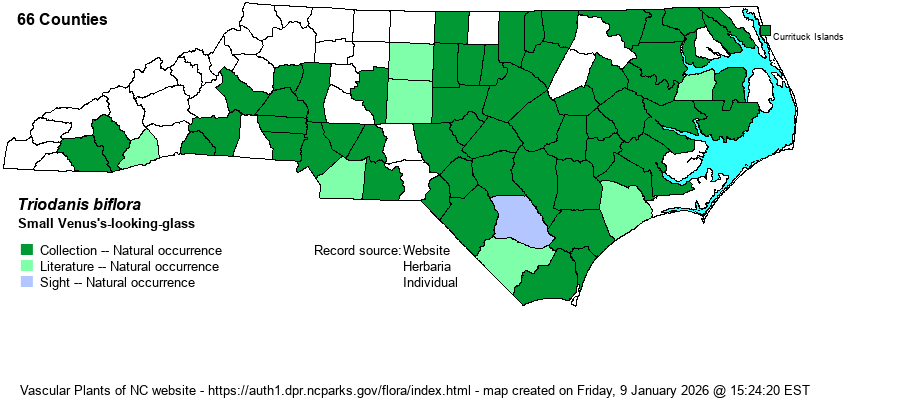| Author | (Ruiz & Pavon) Greene | |
| Distribution | Occurs throughout the Coastal Plain and the eastern Piedmont, and also present in most of the southwestern Piedmont. Present only in a few southern Mountain counties. Seemingly absent from the northwestern Piedmont and most of the central and northern Mountains.
This is a Southern and Western species, found only north to eastern VA, KS, and OR, ranging south to central FL and TX. | |
| Abundance | Common in most of the Coastal Plain, except rare to uncommon in coastal counties. Frequent in the eastern Piedmont, and fairly common in the southwestern Piedmont. Very rare in the southern Mountains. This species, often considered as a variety of T. perfoliata, is clearly less common than that species, especially in the Piedmont and Mountains. | |
| Habitat | Both of these species seem to occupy the same habitats and can be seen together. They are found in fields, grassy roadsides, and other sunny grassy places. Though often found together, if they are just varieties of the same entity, why would this taxon not grow with T. petiolata in weedy fields in the northwestern part of the state? | |
| Phenology | Blooms from April into June, and fruits soon after flowering. | |
| Identification | Both Triodanis species are quite slender and erect, with mainly unbranched stems, but only reaching about 10-12 inches tall. Both have numerous alternate leaves, with flowers in leaf axils in the top part of the stem. They differ in several ways. This species has rounded to ovate leaves, about 1/2-inch long, but are sessile and not clasping the stem, whereas leaves of T. perfoliata are wider and more rotund and clearly clasp the stem. This species has chasmogamous (open) flowers only at the top of the stem, usually just one flower in bloom at a time near the tip; flowers in T. perfoliata often grow along much of the stem. The pores in the capsule of this species are near the top, whereas in the other species are well below the apex of the capsule. Normally, the flower(s) of this species is lavender to pale blue and not as rich violet as those found in T. perfoliata. Most biologists have little or no trouble in separating these two just by leaf shape, but flower location on the stem is also helpful. | |
| Taxonomic Comments | These species were in Specularia for most of the last century. As mentioned above, many references do not consider this taxon as a good species, but RAB (1968) did, as does Weakley (2018).
| |
| Other Common Name(s) | None | |
| State Rank | S5? [S5] | |
| Global Rank | G5T5 [G5] | |
| State Status | | |
| US Status | | |
| USACE-agcp | | |
| USACE-emp | | |

